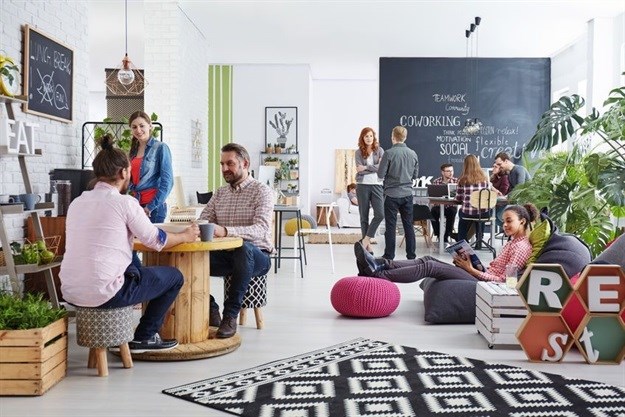
Subscribe & Follow
#AfricaMonth
Jobs
- Head: Occupational Health Cape Town
In the news
No more psyche-ward green: 7 tips to making your office better

Isla Galloway-Gaul, managing director of Inspiration Office, an Africa-wide office space and furniture consultancy said that despite so much evidence of the massive productivity and health benefits of more relaxed, people friendly spaces, many offices in South Africa are still quite dreary.
“But the good news is that it takes very little to make an office a much happier place to be. It’s a good time for business to use the new year as an opportunity to make offices charming to the eye rather than just utilitarian workplaces.”
Here’s how:
- Make it feel like home
"There has been a huge movement toward the ‘home away from home’ style of office design called resi-mercial, a combination of residential and commercial design inspiration," Galloway-Gaul noted.Employees need a work space that is separate from home but that doesn’t mean work can’t be comfortable and welcoming. Soft seating, coffee tables, bar-height tables, kitchens, TVs all help to make people feel they are in a friendly place with familiar facilities.
- Open the seating plan
We are all familiar now with the world’s biggest tech firms like Google, Amazon and Cisco Systems showing off all the super hip things they do for their employees. “Luckily you don’t need billions of dollars to break out of the work place mould,” said Galloway-Gaul. The lower cost concept of co-working brings an open seating plan and office structure that encourages cross-pollination of ideas, employees, and events in larger buildings. Instead of the same employees seeing each other every day, co-working spaces allow them to mingle with employees from other companies and used shared resources like gyms, canteens and conference rooms that smaller companies couldn’t afford alone. - More... oxygen... please!
Trees, plants, and all things green not only bring some much needed vibrancy to normally bland, dull cubicles, but they bridge that gap between indoor and outdoor. “Plants not only look good and increase productivity, they improve air quality and wellbeing. They also meet our human tendency to want to connect with nature, known as biophilia.” - Embrace downtime
Bosses develop nervous ticks when you tell them employees need downtime during the work day. But they do. It’s good for their brains to take a break and relax.If you can’t afford a water slide and a paintball hangar in the cafeteria, keep it simple. “Put a video game console in the break room or an old pinball machine in the lobby. Schedule theme days. It’s important to have fun with it,” said alloway-Gaul.
- Hire a cutting-edge architect - or plan B
A cutting-edge architect comes from Sweden, wears black-framed glasses for effect, sports a honey-coloured beard and wears a plaid shirt - and charges by the minute. But plan B can be effective too. Even a few quirky adjustments to the seating arrangement, furniture and lighting can make the work space feel cool and unique in a way that excites employees to come in each day. It also fosters creativity. - Mix things up
While number 6 is not strictly an office improvement, it’s certainly a working life improvement. “While not everyone has the freedom to work at home, everyone should be given the opportunity, at least on occasion. The relaxation and freedom it offers suits many people. And it makes the office look a little bit fresher on your return,” said Galloway-Gaul. - Party like it’s 2999!
After hours parties and opportunities to relax and unwind are important to developing a creative, inclusive environment where everyone feels comfortable. “It’s also important for people to get to know their colleagues in a more sociable setting,” Galloway-Gaul concluded.
Related
Office vibes are 'weird and not fun': Can we regain their lost spark? 14 Mar 2025 2025 office design trends shaping the future of workspaces 24 Feb 2025 Ways to align your workspace with your brand 28 Oct 2024 From startup to key industry player in five years: Internal Developer's (ID) rise in workplace design and build 22 Jul 2024










